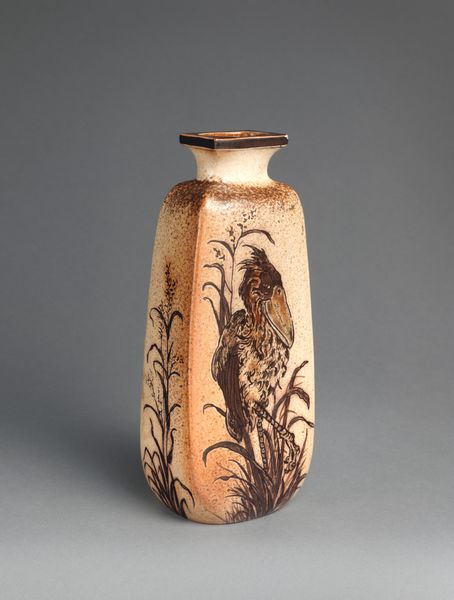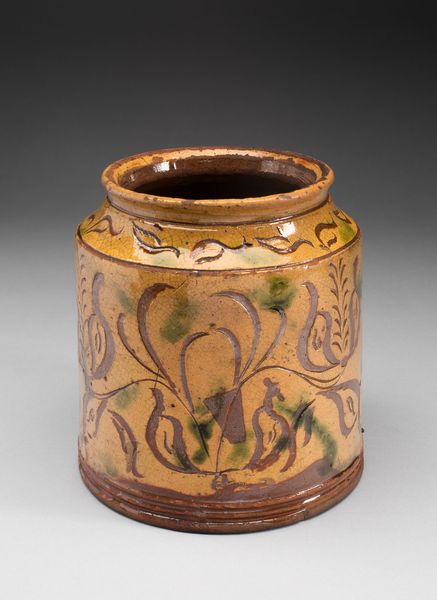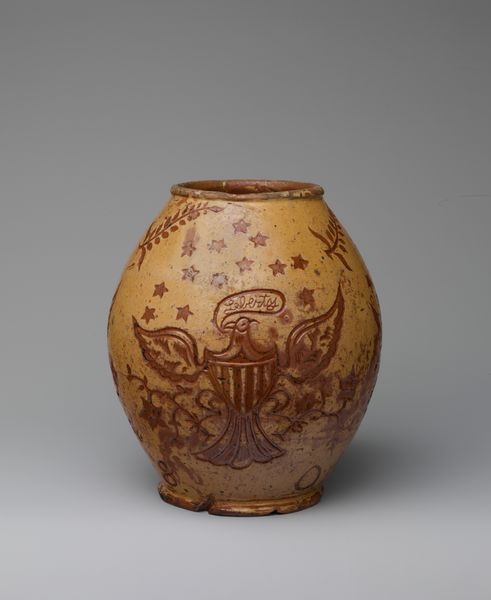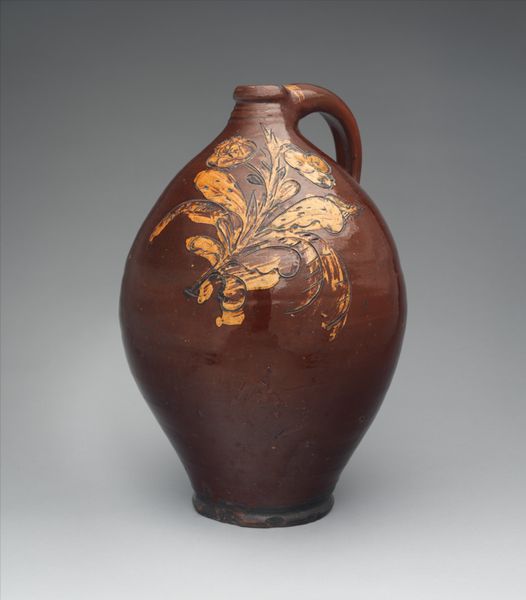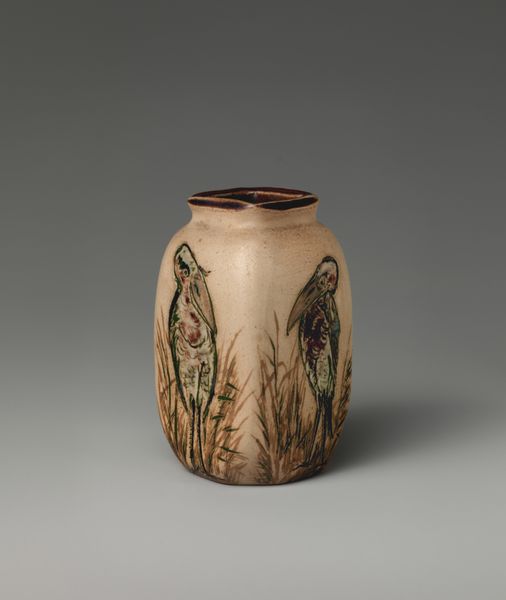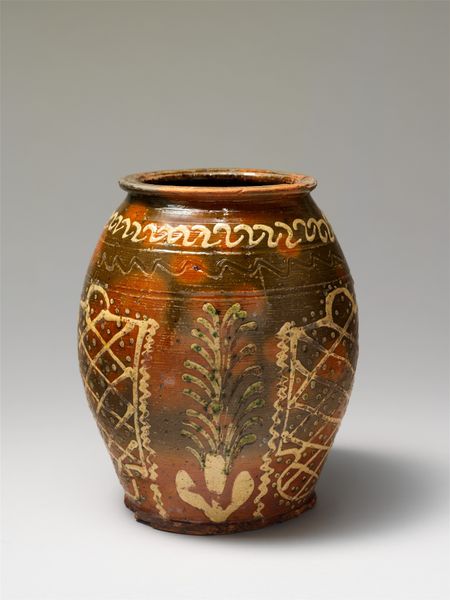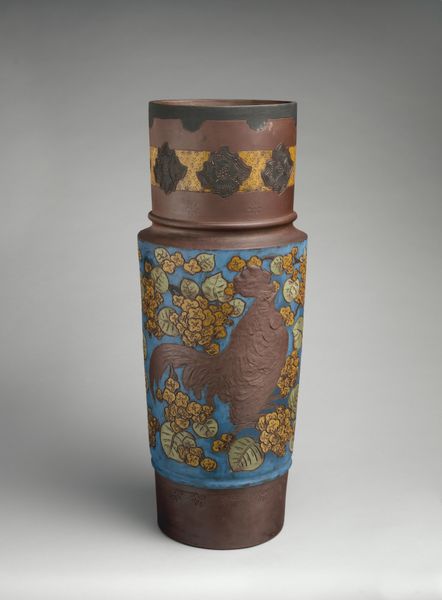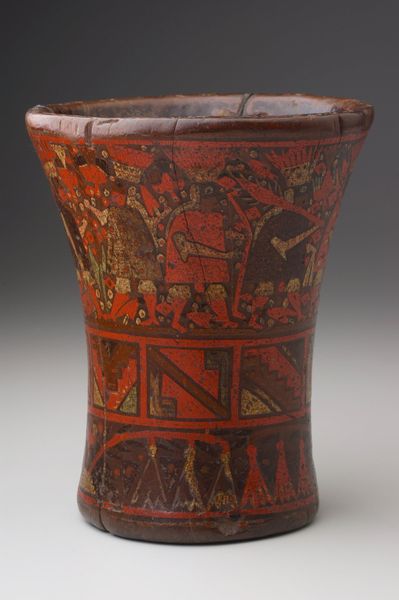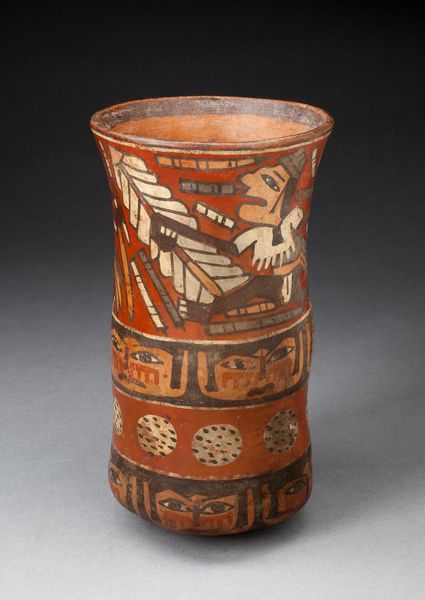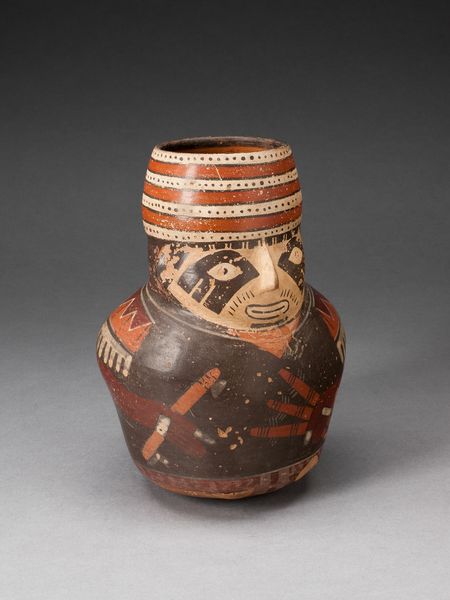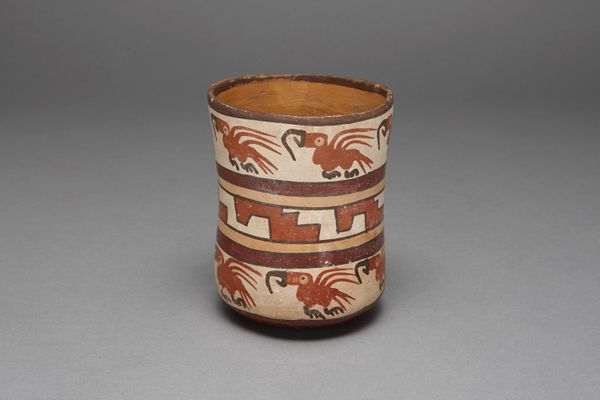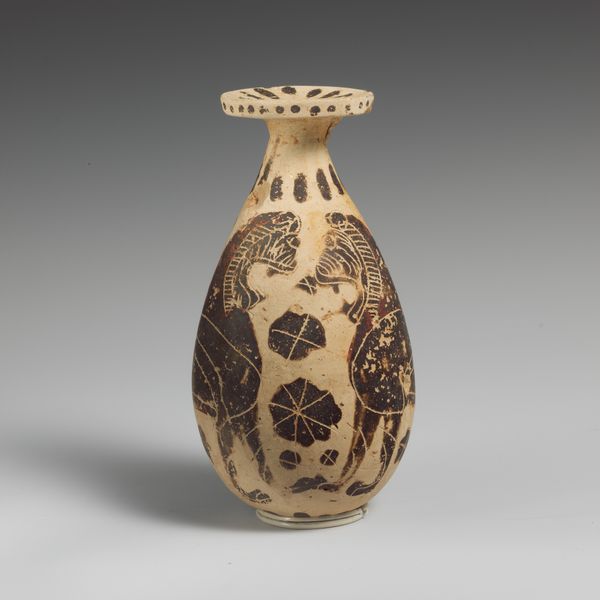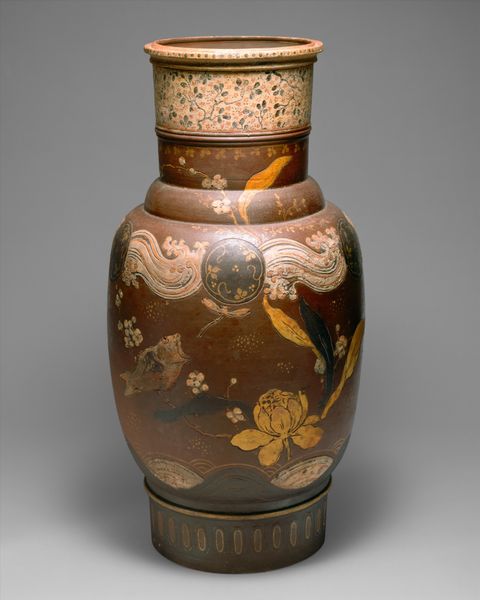
ceramic, sculpture
#
ceramic
#
house
#
food illustration
#
sculpture
#
ceramic
#
decorative-art
Dimensions: Overall (confirmed): 15 7/16 × 7 3/4 × 7 3/4 in., 9.6 lb. (39.2 × 19.7 × 19.7 cm, 4.4 kg)
Copyright: Public Domain
Curator: Right, let's discuss this "Vase with Reaper," attributed to Haviland & Co., and estimated to be from 1880-1890. It's ceramic. What jumps out at you? Editor: The vase itself is pleasing, but the depiction on its side makes it feel a bit somber and reflective, you know? There is a building with trees near, that feels almost melancholic in execution. Curator: I find the material itself rather compelling. Examining ceramic production reveals shifts in labor practices during the late 19th century. Haviland & Co. was known for its involvement of artists in the decorative process, and that suggests that artisans who created everyday items infused their own creativity. Editor: Right, and speaking of "artists", I feel I should say that there's also a curious flatness, almost a naive quality. The drawing feels quite simple, yet that contributes to this strange, charming world in its surface. And what I find the most curious, is that such scenery is on a vase, and the result gives a really interesting mood that feels both ordinary and a bit eerie, do you see it? Curator: The material constraints, of course, directly impacted artistic choices. A ceramic surface doesn't allow for the nuances achievable on canvas. That's an important limitation which artists have been testing since the discovery of the firing process. We could analyse the composition looking at materials, labour division and economy. Editor: I’d say it creates, in my perspective, this tension between fine art and craft. The reaper harvesting seems rather morbid, especially with all the fields in the back, I find that tension just thrilling, really! Like this object is haunted by a forgotten song. Curator: Precisely! This brings me back to our discussion about material culture: this vase blurs traditional boundaries between high art and the utilitarian object. How it was used impacts its perceived value and what the image meant to whoever possessed the item. Editor: The craftsmanship makes me consider, does it succeed, then, at escaping some boundaries imposed in its material? Does it transform the utilitarian into something genuinely moving? Curator: Possibly! Thinking about what it holds and who is doing it offers new ways of evaluating the object in the present. Food for thought. Editor: Food, and beauty, both offered by our reaper! Okay, an unexpectedly pleasant and productive stroll!
Comments
No comments
Be the first to comment and join the conversation on the ultimate creative platform.
